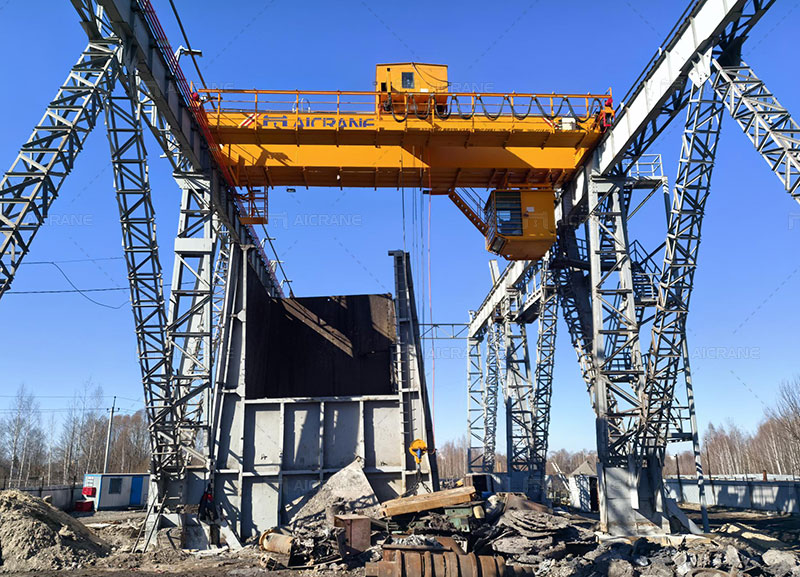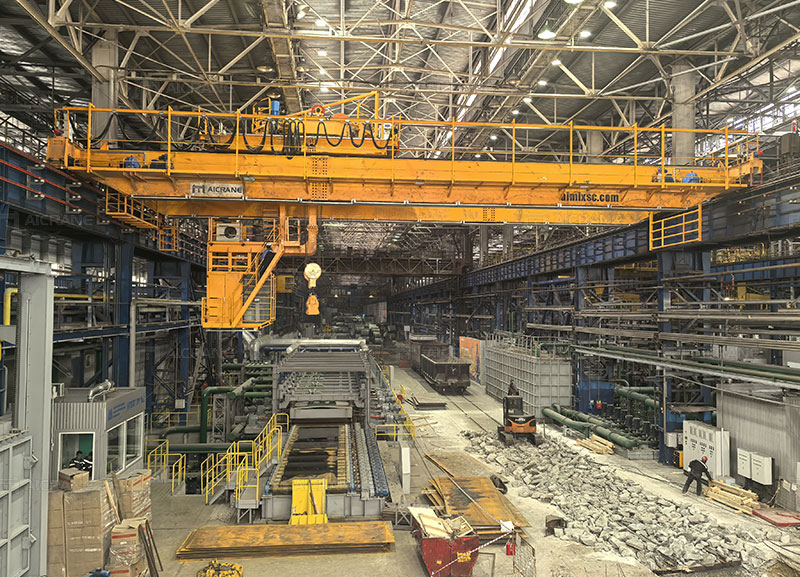Bridge cranes—also known as overhead cranes—are essential lifting equipment in factories, warehouses, shipyards, power stations, and many other industrial settings. These cranes improve material handling efficiency, safety, and productivity. One of the most common questions from potential buyers is: How much does a bridge crane cost in 2025? The answer, of course, depends on many variables such as crane type, load capacity, span, lifting height, customization, and technological integrations.
This article explores the typical price ranges for bridge cranes in 2025, current cost trends, influencing factors, and tips for getting the best value when buying.

1. Types of Bridge Cranes and Their Typical Costs in 2025
Bridge cranes are generally divided into two main types: single girder and double girder. Here’s a breakdown of each type and their estimated price ranges in 2025.
1.1 Single Girder Bridge Cranes
The single girder bridge cranes are ideal for light to medium-duty lifting applications. They are cost-effective and easier to install.
Typical Load Capacity: 1 ton to 20 tons
Span: 5 to 30 meters
Price Range (2025):
-
1-5 ton: $8,000 – $15,000
-
10 ton: $15,000 – $25,000
-
15-20 ton: $20,000 – $35,000
The prices can increase with greater spans, lifting height, or custom features like anti-sway systems, frequency inverters, or explosion-proof components.
1.2 Double Girder Bridge Cranes
The double girder bridge cranes are used for heavy-duty applications and higher lifting heights.
Typical Load Capacity: 5 tons to 500+ tons
Span: 10 to 40+ meters
Price Range (2025):
-
10 ton: $25,000 – $45,000
-
30 ton: $50,000 – $80,000
-
50 ton: $75,000 – $120,000
-
100+ ton (custom-built): $150,000 – $500,000+
Double girder cranes may include features like walkways, maintenance platforms, and higher control precision, all of which affect cost.

2. Factors That Influence Bridge Crane Pricing
Several key factors can significantly influence the total cost of a bridge crane in 2025:
2.1 Load Capacity and Span
The higher the load capacity and the longer the span, the more steel and structural reinforcements are required, directly increasing the bridge crane cost.
2.2 Lifting Height
A higher lifting height means longer hoist ropes, taller columns (in case of free-standing cranes), and enhanced hoisting mechanisms, all contributing to increased costs.
2.3 Crane Configuration
-
Top Running vs. Under Running: Top running cranes are usually more expensive due to their structural requirements but offer higher lifting capacities.
-
Custom Features: Anti-sway systems, automation, remote monitoring, variable frequency drives, and PLC controls can add $5,000 to $50,000 depending on complexity.
2.4 Manufacturing Materials
Steel prices remain a significant cost component. In 2025, steel prices are relatively stable compared to the volatility seen in the early 2020s. However, fluctuations still occur based on geopolitical tensions and supply chain dynamics.
2.5 Brand and Origin
-
European and American brands: Typically 20%–40% more expensive than Asian manufacturers due to labor costs, design standards, and added features.
-
Chinese bridge cranes: Offer highly competitive pricing while still maintaining compliance with global standards like FEM, ISO, and CMAA.
2.6 Installation and Commissioning
On-site installation can add 10%–20% to the base crane price, depending on crane size and local labor rates.
2.7 After-Sales Support and Warranty
Crane suppliers offering comprehensive after-sales service packages and extended warranties may charge slightly higher upfront but reduce long-term maintenance costs.
3. Bridge Crane Pricing Trends in 2025
3.1 Stabilizing Material Costs
After years of fluctuation due to COVID-19, war-related supply chain issues, and inflation, 2025 has seen relative stability in raw material pricing. This has helped stabilize crane pricing in general.
3.2 Increase in Demand for Smart Features
More customers in 2025 are requesting smart features such as IoT connectivity, condition monitoring, and predictive maintenance. This trend is pushing up the price of cranes with these advanced capabilities.
3.3 Higher Demand from Renewable Energy and Infrastructure Sectors
Large-scale investments in renewable energy projects, including wind turbine and solar panel manufacturing, have led to increased demand for double girder heavy duty bridge cranes. Infrastructure development in emerging markets is also contributing to higher overall demand.
3.4 Sustainability and Energy Efficiency
With growing environmental awareness, customers are more willing to invest in energy-efficient crane motors and regenerative drives, which, while more expensive initially, offer savings in operational costs.
4. Tips for Buying Bridge Cranes in 2025
Here are several practical tips for making a wise investment in a bridge crane this year:
4.1 Define Your Requirements Clearly
Work closely with your engineering and operations teams to define capacity, span, height, and cycle requirements. Over-specifying will drive up costs unnecessarily.
4.2 Consider Total Cost of Ownership
Don’t focus solely on purchase price. Include lifecycle costs such as maintenance, energy consumption, and downtime risk in your evaluation.
4.3 Compare Multiple Quotes
Always compare at least 2–3 suppliers. Look beyond the numbers—evaluate certifications, component brands (like SEW, Siemens, Schneider), and references.
4.4 Ask About Lead Times
Due to continued pressure on global logistics, crane production and delivery lead times in 2025 range from 6 to 16 weeks, depending on the size and customization level.
4.5 Evaluate After-Sales Support
Good after-sales service, including online or on-site installation guidance, spare parts supply, and technical training, is essential for long-term satisfaction.
5. Conclusion
In 2025, bridge crane costs range widely—from as low as $8,000 for basic 1-ton single girder cranes to over $500,000 for large, custom-engineered double girder cranes with advanced features. Pricing is affected by numerous variables including capacity, span, configuration, smart systems, and the supplier’s origin.
Current market trends show growing demand for intelligent, energy-efficient, and sustainable cranes, which are nudging average prices upward. However, technological advancements and global competition continue to give buyers more options and better value than ever before.
By clearly identifying operational needs, considering total cost of ownership, and selecting reliable crane suppliers with strong support systems, businesses can make informed decisions and secure long-term gains from their bridge crane investments in 2025 and beyond.